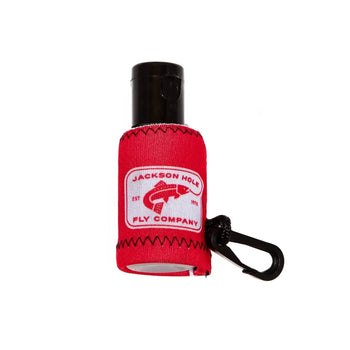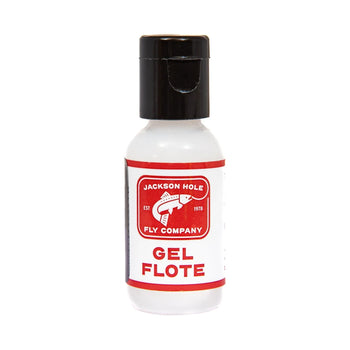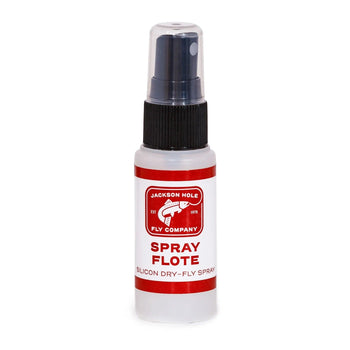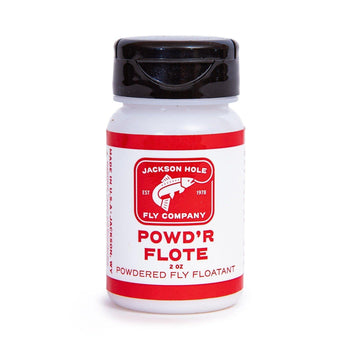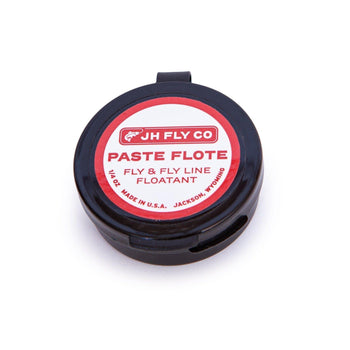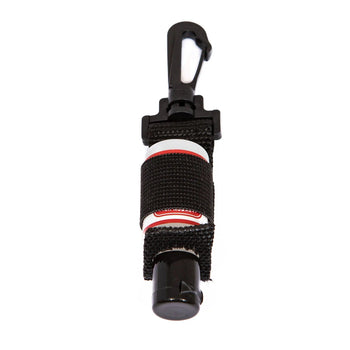The Essential Guide to Floatant: How, When, and Why to Use It on Your Flies

The History of Floatant
Floatant has a long history in the world of fly fishing. Early anglers used natural substances such as lanolin, beeswax, or even petroleum jelly to coat their flies, keeping them buoyant on the water. These substances, while effective to some degree, were often messy and inconsistent in performance. Over time, as fly fishing evolved, so did the development of better floatants designed specifically to meet the demands of modern fly fishers.
Today, floatants come in various forms—gel, spray, powder, and paste—each engineered for different fly patterns and fishing situations. Modern floatants are designed not only to repel water but to maintain the integrity of the fly, ensuring that it rides naturally on the surface.
Why Use Floatant?
The primary reason for using floatant is to prevent your dry fly from becoming waterlogged and sinking. A floating dry fly mimics the behavior of a real insect resting on the surface of the water, which is often when fish are most likely to strike. Properly applied floatant can ensure that your fly maintains this illusion for an extended period, increasing your chances of success on the water.
Without floatant, a fly will absorb water quickly, sink, and lose its appeal to fish. It’s especially important to use floatant when fishing in faster or turbulent waters, as the added movement can make your fly become submerged more quickly.
When to Use Floatant
Floatant should be applied to your fly before it gets wet, ideally right before you begin fishing. For best results, make sure your fly is completely dry before application. If your fly becomes soaked during fishing, simply use a drying agent like powdered floatant to restore its buoyancy.
Different fishing conditions may call for specific types of floatant:
- Gel floatant works best on bushy dry flies, like the Adams or Elk Hair Caddis, as it helps coat the fibers of the fly thoroughly.
- Powder floatants are excellent for restoring flies that have already become wet. These are often used mid-fishing session to revitalize a fly that’s been fished hard.
- Spray floatants offer quick, even coverage and are perfect for delicate flies where a more precise application is needed.
- Paste floatants are great for larger flies and leader treatments, making them versatile for different uses beyond just your fly.
How to Apply Floatant
The process of applying floatant depends on the type you’re using, but here are some general steps to follow:
-
Start with a dry fly: Make sure your fly is bone-dry before applying any floatant. You can use a fly dryer or simply shake it out and let it sit for a moment.
-
Apply gel or paste floatant: For gel floatant, take a small amount between your fingers and gently rub it onto the fly, ensuring that you cover the hackle and body without over-saturating it. The goal is to coat the fibers evenly without matting them down.
-
Use spray floatant for delicate flies: Hold your fly by the hook and lightly spritz it with spray floatant. This works especially well on flies like mayflies or small caddis patterns.
-
Reapply as needed: During your fishing session, your fly might lose its buoyancy after a few drifts. Use a drying agent like powder to absorb any excess water and apply more floatant if necessary.
Highlighting JHFLYCO's Floatant Products
At Jackson Hole Fly Company, we offer a range of high-quality floatant products designed to keep your flies on the surface and your fishing experience successful.
-
JHFLYCO Caddy-Sak with .5oz Gel Float
This convenient kit comes with a caddy and a .5oz bottle of gel floatant, perfect for keeping your dry flies floating throughout the day. The caddy makes it easy to access while you’re on the water, ensuring you always have floatant at hand. -
JHFLYCO Gel Float
Our gel floatant is ideal for medium to large dry flies, creating an even coat that repels water effectively. It’s long-lasting and perfect for flies with bushy hackle or deer hair wings. -
JHFLYCO Spray Float
The spray floatant offers quick and even application, making it perfect for small flies or situations where you need a light, fast-drying coating. This product is also great for fishing on delicate water surfaces where subtle presentation is key. -
JHFLYCO Powdr-Flote Crystals
If your fly gets waterlogged, Powdr-Flote Crystals are the answer. Simply place your fly in the container, shake it around, and your fly will be ready to float again. This is a must-have for long days on the water. -
JHFLYCO Paste Float
Our paste floatant is perfect for larger flies, particularly terrestrials, or for treating your leaders. It’s versatile and easy to apply, providing long-lasting buoyancy. -
Black Floatant Bottle Holder w/ Gel Floatant
Stay organized with this sleek bottle holder that attaches to your vest or pack, keeping your gel floatant within easy reach. It comes with a bottle of JHFLYCO Gel Float, so you’re ready for the water right out of the box.
Floatant is essential for keeping your flies on the water’s surface, where fish are most likely to strike. Understanding how and when to apply floatant can make all the difference in your fly fishing experience. Whether you’re a seasoned angler or a beginner, Jackson Hole Fly Company has the floatant products to meet your needs. Explore our selection, and make sure your flies stay dry and ready for action!


